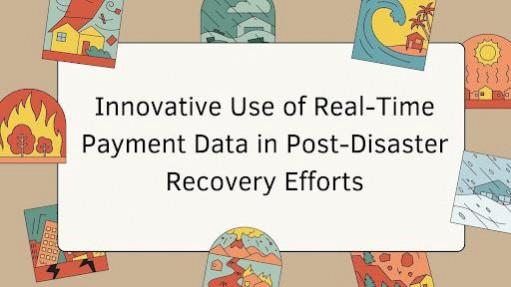
Natural disasters have become more frequent and severe, disrupting communities and daily life. Phanindra Kalva proposes a groundbreaking approach to disaster recovery by leveraging real-time payment data to improve access to essential services. Using big data analytics, machine learning, and advanced visualization tools, this innovative system enhances operational efficiency, supporting emergency response and community resilience during recovery.
A New Approach to Disaster Recovery
Natural disasters disrupt communities, leaving residents needing timely information on essential services. Traditional recovery methods often fall short. A new system uses real-time payment data to track operational businesses, providing up-to-date information on available services. This approach accelerates recovery and optimizes resource allocation, ensuring faster, more effective support for affected areas.
Harnessing the Power of Transaction Data
This innovation collects and processes real-time transaction data from various financial systems, including credit card networks, mobile payment apps, and point-of-sale systems. By analyzing transaction volumes, anomalies, and geospatial patterns, the system determines which stores are operational, often within minutes of reopening. Using machine learning algorithms, it quickly adapts to changing conditions, ensuring high accuracy. Tests have shown a 94% accuracy rate in identifying functional stores, significantly enhancing the speed and effectiveness of recovery efforts by providing timely and reliable information during disaster recovery.
Visualizing Recovery with Real-Time Insights
The processed data is transformed into actionable insights via an intuitive visualization system. Users can access real-time information on store operations through interactive maps and heatmaps, color-coded to show operational status. These tools help residents and emergency responders quickly locate open stores and assess service density across areas. The system also features customizable filters and time-lapse views to track recovery progress. This detailed, timely information reduces the time needed to find essential services, significantly improving the disaster recovery process and ensuring a more efficient response.
Efficiency Gains in Resource Allocation
A key advantage of using real-time payment data is its impact on resource allocation during disaster recovery. Emergency responders can leverage this data to prioritize relief efforts, ensuring supplies are distributed more efficiently. The system has resulted in a 43% improvement in resource allocation, reducing both redundant deliveries and travel time for distribution vehicles. These efficiencies contribute to faster recovery and a more effective disaster response.
Furthermore, integrating this system with existing emergency response platforms has reduced response times by up to 23%, showcasing its significant impact on operational effectiveness and ensuring a more timely and organized approach to disaster management.
Enhanced Economic and Public Health Outcomes
The system plays a crucial role in both recovery efforts and broader community well-being by speeding up economic recovery and improving public health. By providing real-time insights into business reopenings, it enables businesses to return to pre-disaster transaction volumes 23% faster, boosting local economic activity and accelerating recovery. In addition, the system aids public health by reducing food insecurity and ensuring faster distribution of medical supplies, emphasizing how vital timely, accurate data is for efficient disaster management and its role in supporting both economic stability and public health during crises.
Addressing Challenges and Future Directions
While the real-time payment data system shows significant potential, challenges remain, including limited data coverage in low-tech areas and data privacy concerns. The development team is addressing these by integrating additional data sources, like cash-based transactions, and enhancing privacy measures. Looking ahead, the system's capabilities will expand with the incorporation of IoT devices and predictive models, allowing for better anticipation of disruptions in supply chains and further improving its effectiveness in disaster recovery and response efforts.
In conclusion, Phanindra Kalva's innovative system represents a major leap forward in disaster recovery by harnessing real-time payment data to improve access to essential services and optimize resource allocation. The ability to quickly identify operational stores and track the progress of recovery efforts is crucial in reducing the impact of disasters on affected communities. While challenges remain, the potential of this system to enhance both economic recovery and public health outcomes makes it a vital tool for future disaster management strategies. As disaster events continue to escalate in both frequency and severity, this approach offers a promising solution for building more resilient communities.








